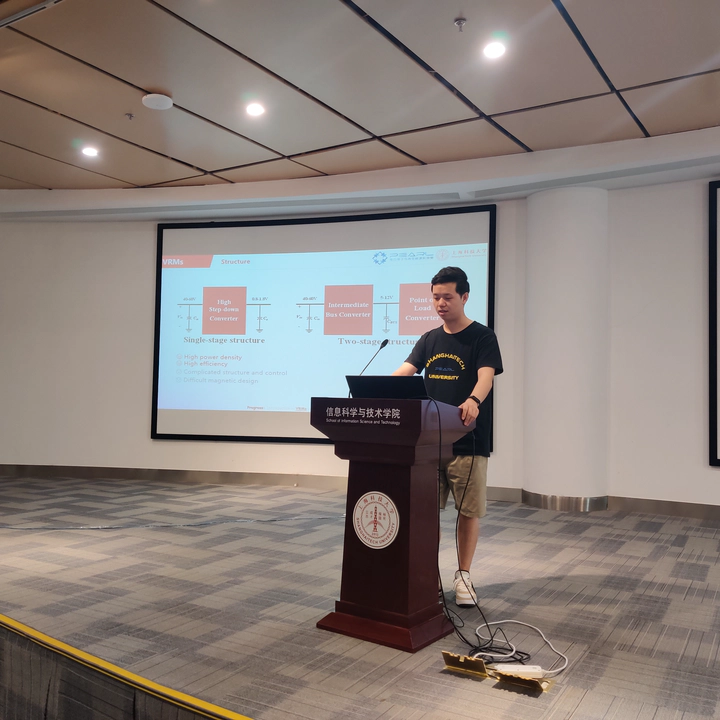Light Load Efficiency Boost Technique for Switched Tank Converters Based on Hybrid ZVS-ZCS Control v2
 Photo by Zehui Li
Photo by Zehui LiAbstract
The latest power architecture in data center utilizes a 48 V distribution bus with voltage regulator modules (VRM) to feed the terminal loads such as memory and computing units operating with very high current (>100A/module) and very low logic voltage (0.8V-1.8V). The state-of-the-art 48 V VRMs can be categorized as inductive-based solution and capacitive-based solution by passive component utilization. Since capacitors possess higher energy density than inductors, capacitive-based converters such as switched-tank converter (STC) have the potential to enhance the power density effectively. Soft-charging and soft-switching techniques are utilized to improve power transfer efficiency. However, the terminal load typically operates under light-load conditions. Hence, improving the light-load efficiency is crucial for energy saving. Correspondingly, a hybrid soft switching control scheme is proposed to improve the light-load efficiency of STC. It regulates the frequency and phase shift between wing-side switches and bridge-side switches such that the converter is tuned in either ZCS or ZVS mode. The proposed control technique enables ZCS mode at heavy load and ZVS mode under light load respectively to achieve high efficiency over a wide load range. The simulation model and hardware prototype are established to verify the analysis. The results demonstrate that the light load efficiency can be improved remarkably using the proposed technique.